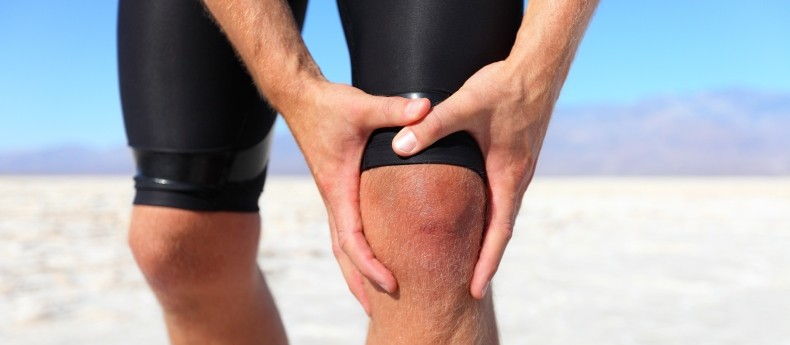
What Do You Have in Common with Michael Owen?
… If it is a sore knee, it could be your ACL…
You are sprinting down the wing, a defender comes for you, you cut inside him, but as you push off, your knee goes ‘pop’ and you fall over in agony. You are helped off the field and watch your team win (without you!) with a bag of ice on your knee. After the game your knee feels a bit better, so you join your teammates for a celebratory beer, and when you get home after midnight, you feel fine. The next morning your knee is agony! You limp to the doctor, who does an X-ray and tells you the bones are fine. Over the next few weeks, your knee gets better, and you are soon back on the pitch – dashing up the wing…you cut inside a defender…and end up face down on the pitch….
Does this story sound familiar? It is typical of an ACL tear.
What is the ACL?
The ACL is the ‘Anterior Cruciate Ligament,’ a tough band of collagen inside your knee joining your thigh bone to your shin bone. It is a little over an inch long, and consists of two bundles of fibers, one which controls front to back movement and one which controls twisting movements. It is a vital part of the system that controls the complex gliding and bending movements of the knee which allow people to do everything from walking slowly to ballet and gymnastics.
How does the ACL get torn?
A violent injury like a ski accident or fall can rupture the ACL, but most ACL injuries are ‘non-contact’, the ACL can be torn if you twist your knee too far or change direction too quickly. Women, in particular, tear their ACLs simply by landing badly from a jump in netball or basketball.
What will happen to my knee if my ACL is torn?
Left alone, you will get arthritis. The more active you are, the more quickly the arthritis will come on. Ten years of football with an ACL tear and you are just about ready for a knee replacement! On the other hand, if you are in your sixties and your sport is cycling, the injury is unlikely to catch up with you.
How do I know if my ACL is torn?
Unfortunately, many ACL tears are missed because people do improve after the injury and in many cases return to playing sport even though the knee is not 100%. One study in the UK said 70% go undiagnosed. The knee will feel loose when examined, but if it is a little sore, muscle spasm can easily hide this. Magnetic Resonance Imaging (MRI) will show the ACL, but it cannot always show whether the ACL fibers are taut and functioning or loose and not functioning. In China, many MRI doctors are not very familiar with the ACL and the report may not be very accurate. Orthopedic Specialists at United Family Hospitals often diagnose ACL tears in patients who have been having trouble with their knees for a long time but have not been able to get a diagnosis.
What should I do if my ACL is torn?
The modern answer is to have it reconstructed. Orthopedic Specialists at Shanghai United Family Hospital & Clinics offer the latest technique in ACL reconstruction – anatomical double-bundle ACL reconstruction. You are given an epidural or general anesthetic, and then two of your own hamstring tendons are used to recreate your ACL (The hamstrings re-grow). It is an arthroscopic or ‘keyhole’ procedure, so you can walk the same day and though there is some discomfort, it is not a painful procedure. Most people go home from hospital the same day or the next morning and return to office jobs after 3 or 4 days. Rehabilitation should be supervised by a physical therapist (about 20 visits over 6 months are often required). You can usually expect to be jogging by 2 months, returning to light sports training at 6 months, and hopefully competition within 9 to12 months.
What are the results?
Because the anatomical double-bundle ACL reconstruction is so new, we don’t have any long term results. The success rate of conventional ‘single-bundle’ ACL reconstruction is about 80% at 5 years. Some of the failures occur because the function of the natural ACL is not recreated by simply reconstructing one bundle. Biomechanical studies of double-bundle ACL reconstructions have shown that this modern technique provides knee stability superior to the conventional technique and, in fact, produces near-normal stability. Outcomes of the anatomical double-bundle ACL reconstruction at 2 years are superior to conventional single-bundle ACL reconstruction and it is likely this will translate into a better long term outcome.
So what do I have in common with Michael Owen?
The England striker tore his ACL 51 seconds into a match with Sweden in the 2006 World Cup, and had an ACL reconstruction in September 2006. He returned to football in April this year and has since scored for England.
Copyright United Family Healthcare 2018 All right reserved ICP 京ICP备13017554号-4



